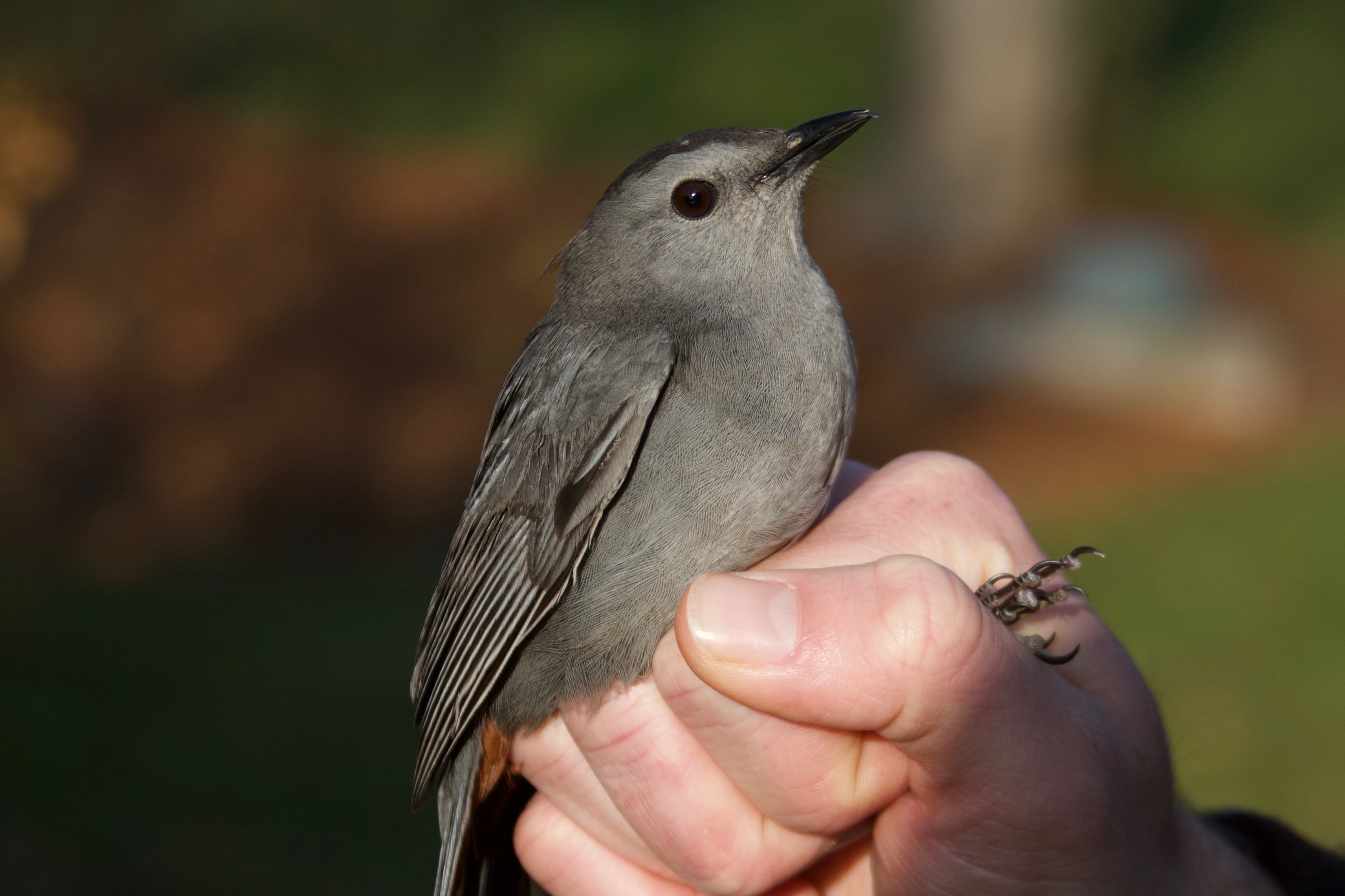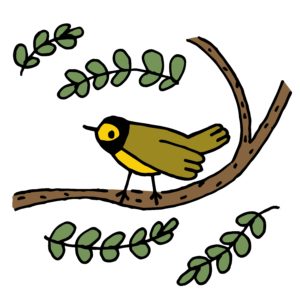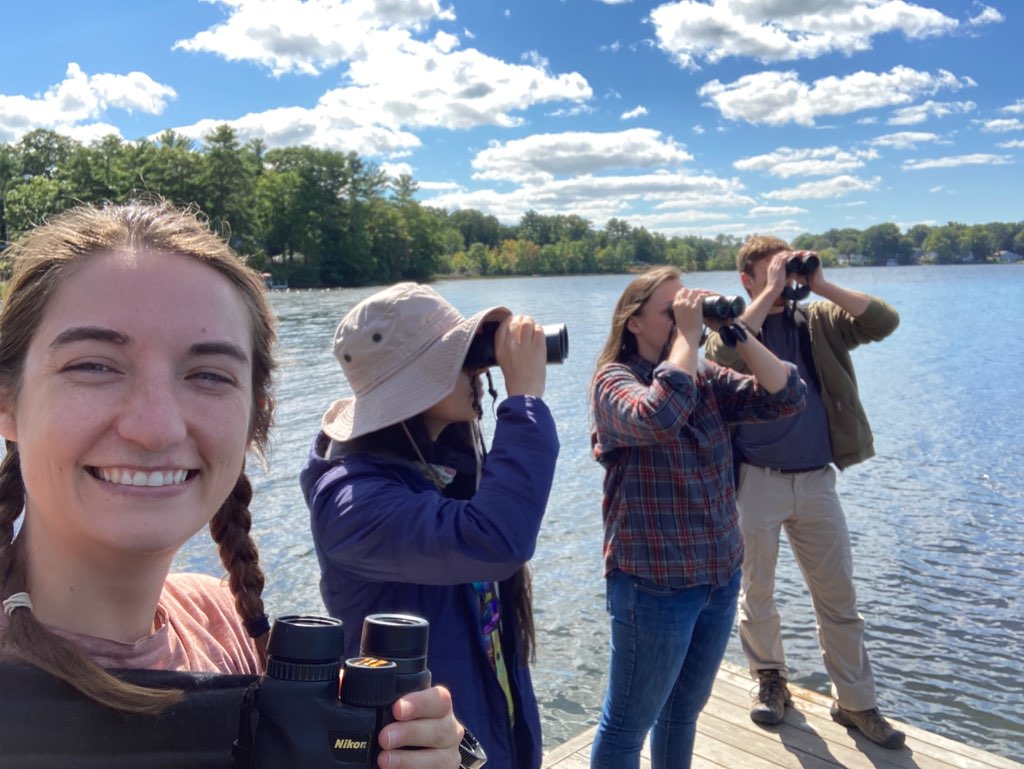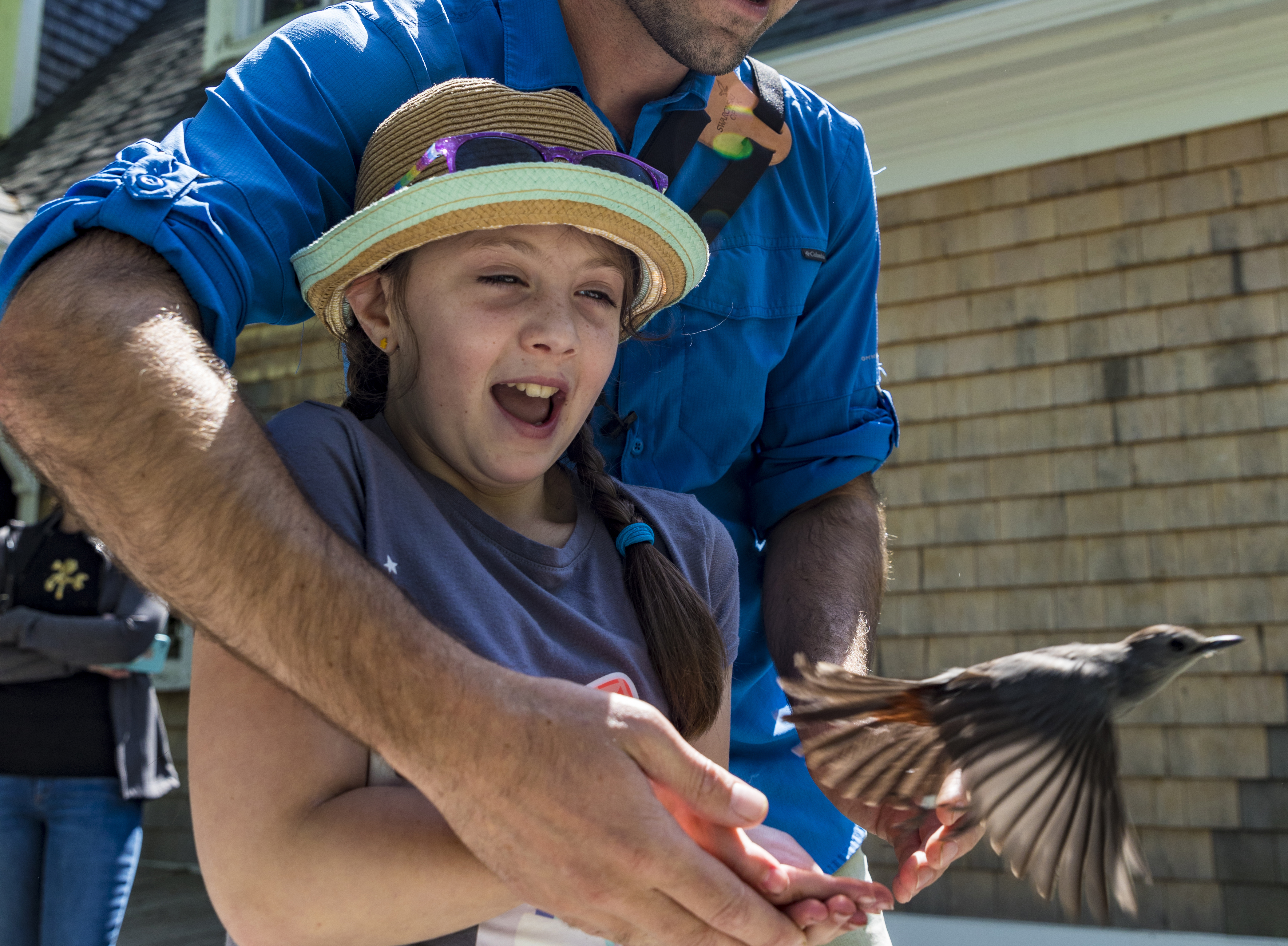The maple leaves have just begun to change, and by the end of the week yellow leaves had covered some of the net lanes. We finished our fifth week of the fall season with 88 new birds banded, 79 recaptures processed, and six new species for the week. This brings our total up to 460 new birds banded, 311 recaptures processed, and 47 species altogether. On Monday, we caught our first Black-throated Green and Blackpoll Warblers along with several newly-arrived Gray Catbirds. The winds drove the Gray seals in closer than usual and we watched them “bottling” during the day; a behavior exhibited when sleeping or resting wherein their entire body remains submerged except for their noses.
Our excitement Monday night into Tuesday was mounting. We had checked Bird Cast (a website that uses weather data and radar to predict migration movements of birds in the U.S. and where you can watch birds migrating at night in real-time) and it seemed like Monday night into Tuesday could have a lot of birds moving in the Northeast! But a slight east direction to the north wind must have pushed the migrants inland which left us with fewer birds than expected Tuesday, possibly compounded by the fact that gusty winds persisted until the afternoon, preventing us from opening all our nets. Some new birds did arrive, however, and we caught two first-of-seasons: a Northern Parula and our first White-throated Sparrow!
Later on Tuesday, we saw a few Northern Gannets soar by on the ocean and noticed that a White-winged Scoter had snuck into the Common Eider flock that routinely floats below the bluff. A smoky haze began to filter in later in the afternoon. We were puzzled at first, but after checking the National Weather Service in our area, we learned that the smoke from the wildfires 3,000 miles away in the west had reached the East Coast. On what would have been a sunny, bright day, the sunlight was muted and had a yellowish cast. It was especially noticeable at around 2 P.M. when the sun was still high in the sky, but the light was dim. The haze was most noticeable at sunrise and sunset when the sun appeared reddish orange.





 Back to all
Back to all



